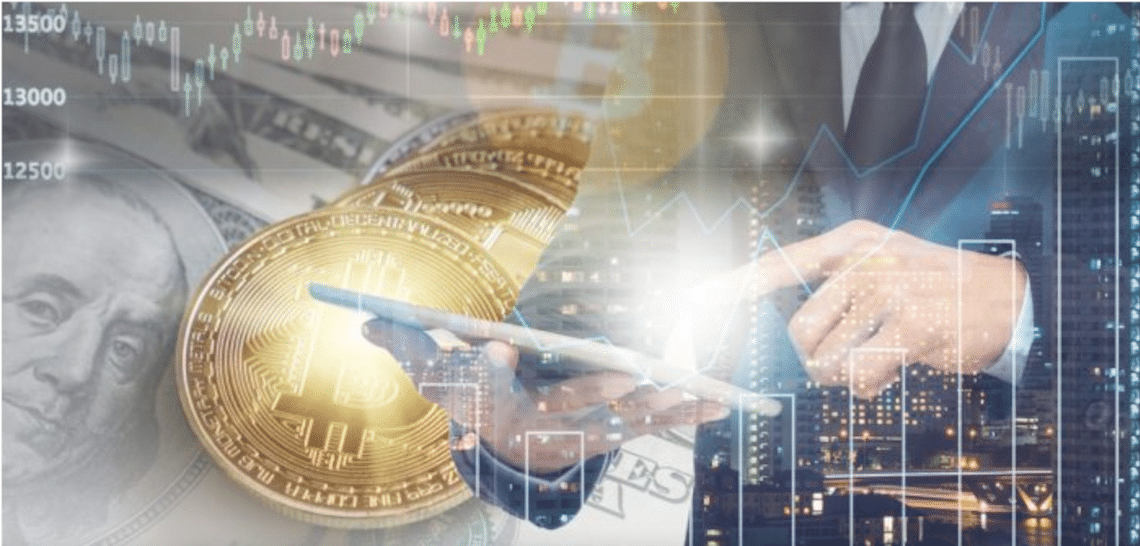
We live in times of change and the winds of change are clearly felt. Now we have to make a decision: Do we want to build walls or windmills? Karen Wendt on digitization, digital assets, Blockchain and tokenization.
Volatility, uncertainty, complexity and ambiguity seem to be the new normality in our lives. The American military has coined the term VUCA for this. Will it be possible to think linearly in a VUCA environment (the future will be like the past) – or not?
“Welcome to the slowest day of the rest of your life.” – says Ian Goldin Oxford Professor of Globalization often during his talks.
The current era is characterised by complexity and accelerated development with unforeseen consequences. So linear thinking will probably not be enough, even when it comes to business models, life planning or the vision of money.
Digitization is changing everything
It was 1975 and I had found the first digital camera in the world. It could take 30 pictures on a standard cassette with a resolution of 0.01 megapixels each. Nowadays, all you have to do is pull out your smartphone to take a photo, publish it on Instagram and send it around the world in a split second. How fast are things moving these days? Research shows that since 2000, 52 percent of Fortune 500 companies have either gone bankrupt, been taken over or ceased to exist due to digital disruption. The collision of the physical and digital worlds has affected all dimensions of society, commerce, businesses and individuals. Gordon Moore once stated that
“the storage capacity and our knowledge doubles every two years” – Gordon Moore
Moore stated in his law that the number of transistors on a chip will double every two years. Moore’s law is one of those fascinating things that describe technological development. It is not a physical law, it only describes an observation of the computing power of microchips. The law states that depending on the source, the computing power of a microchip increases by a factor of two every two years (18 months in the original formulation). But will it go on forever?
Change through digital assets
Today, digital assets are so easy to create that we take them for granted. They are also not limited to digital photos. Everything that exists in binary data and is self-contained and uniquely identifiable is a digital asset. These can be MP3 music files, YouTube videos, PDF documents and now crypto currencies. Of all the digital assets created since the beginning of this millennium, crypto-currencies will be the ones that change our investment industry the most. If they become established as a store of value and a medium of exchange, they could replace the money we know and completely change our banking industry. The traditional banking system is a centralized system through which money transactions flow. Banks make money with every transaction they make. Crypto currencies, on the other hand, are based on a decentralized transaction system. No banks are needed to carry out a transaction or store money. In the crypto world, money is stored in the cloud using Blockchain technology.
Advantages of the Blockchain
Blockchain offers the perfect infrastructure for owning digital assets. The Blockchain technology creates new efficiency on the market. Put simply, it is a huge computer network that simultaneously stores and checks data in a digital ledger. This information is stored, remains unchanged and is confirmed by computer code. For crypto-currencies, this means that you don’t need a bank to verify the transfer of funds or the storage location. You are your own bank. Ownership problems could finally be solved with the Blockchain technology. The technology will create an unprecedented level of transparency never seen before.
Ownership, authenticity, transaction history and location can be identified for the first time without involving institutions in the digital asset processes. As a result, it will be much easier to trade and purchase digital assets in the future. Blockchain removes the middleman from the equation when it comes to digital assets. The rules that define digital assets are anchored in the code of the Blockchain network. Advanced integrated protocols, called Smart Contracts, can be used to identify the origin and ownership of digital assets, whether it is a crypto currency or a digital photograph. All assets can be tokenized and digitized.
All assets can be converted to tokens and digitized
The way we invest in assets could change radically in the future due to the increasing tokenization and digitization of assets via the Blockchain. Tokenization refers to the process of issuing a Blockchain token that digitally represents a true tradable asset. And you don’t need a bank with an underwriting team. All this has led to changes in the ecosystem of trust. Peer-to-peer networks are becoming increasingly important and are making it easier to build trust in communities with common interests. Trust is established in a more direct manner rather than by trusting a qualified or authorised company. This change is more bottom-up than top-down.
It is a new trend that aims to replace the existing social structures of institutions and information providers. The change is leading us to develop a framework that allows trust to be built in a peer-to-peer network, with an alternative method for validating the exchange of any kind of information (from information to assets).
Now it’s up to you. Do you think digital assets have a future, or just an addition to the existing system? None of us know now. But the more assets are tokenized, the greater the changes that tokenization and Blockchaining bring, making the old monetary systems obsolete. And we are in the process of creating a new vision of money based on real assets, transparency and peer-to-peer trust.
*Originally published in German at CVJ.ch

